The streets of Paris have become the scene of police repression, attacks on the press and popular resistance. Reports of police brutality are innumerable, as today in France the rights to protest and to freedom of information are under attack. But these demonstrations against pension reform have led to the ‘class war’ regaining body and spirit.
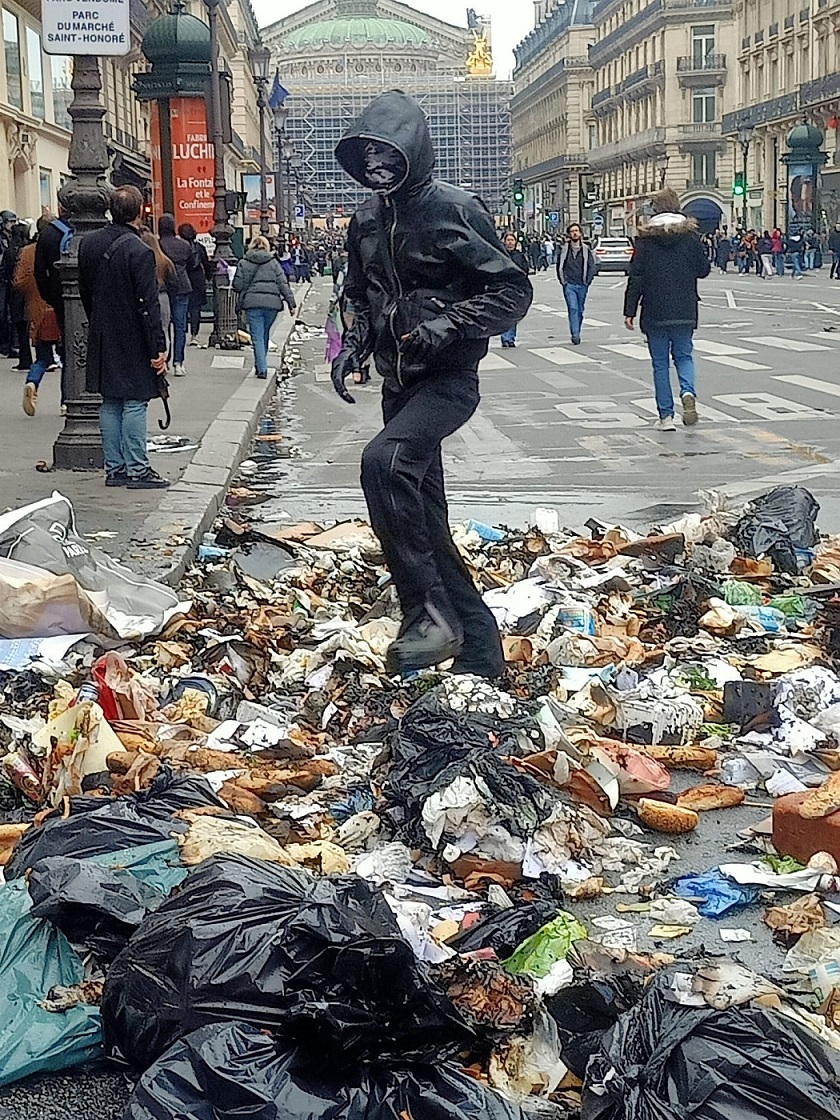
Miguel Ángel Ferris
The coming of spring has been marked by tear gas and the noise of sirens. A scene and a background tune that today represent Paris more than the sound of accordions and the image of the baguette.
Irate demonstrators shout that the ambient temperature is 49.3 degrees, the number of the article in the constitution which Macron invoked desperately to impose his controversial pension reform ‘by force’.
A whole new generation of young people and students has lived for more than six years under the ‘shock doctrine’ popularised by Naomi Klein.
They have suffered in succession militarization due to the jihadist attacks in Paris (2015) and Nice (2016), two years of isolation at home due to the pandemic, public transport strikes that have changed the model of urban mobility in Paris and the harsh repression of the 2019 protests against pension cuts.
A generation which, like that of May 68, decided that it had nothing to lose but much to gain by taking to the streets.
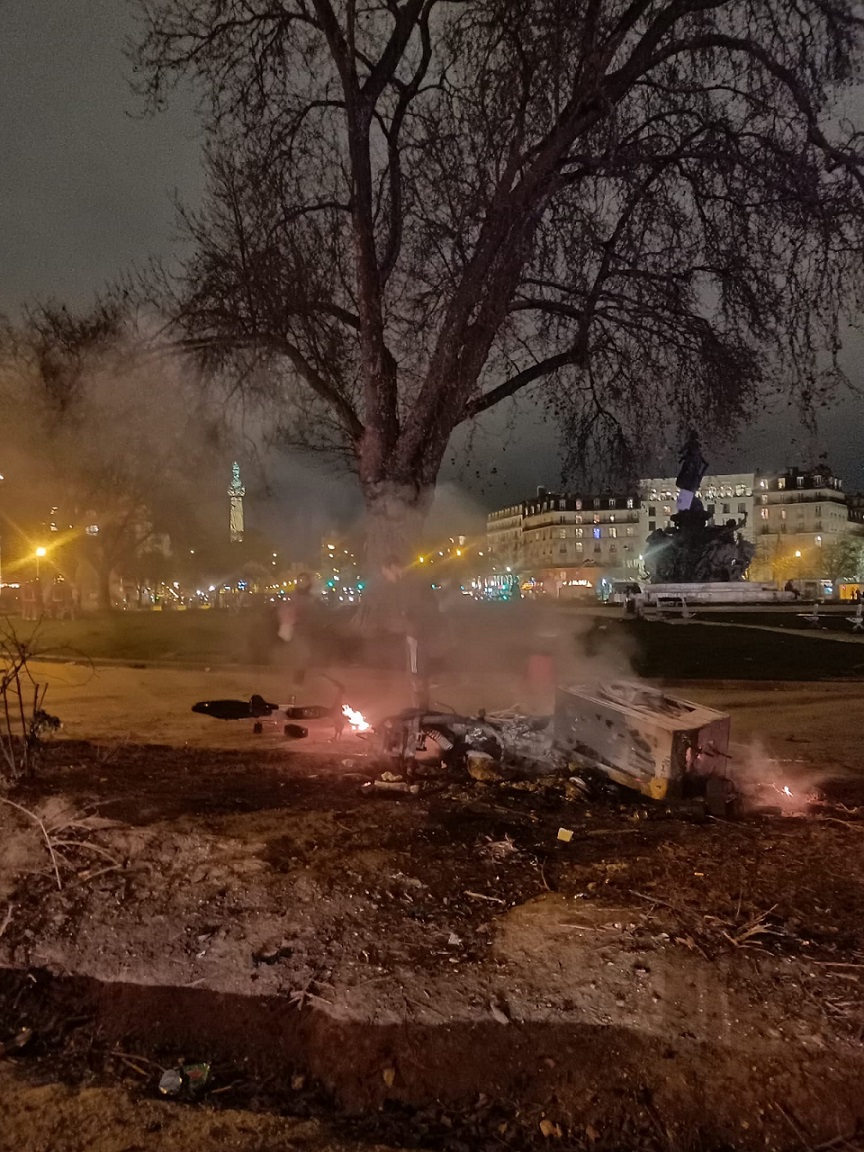
Police brutality and popular resistance
The demonstrations in France are shown by the television channels the way in Spain they show bullfights and bull runs, both of which have become national symbols watched by tourists with amazement but also interest, with some risk of a goring from a bull’s horn or a thump from the police.
The Motorised Mobile Brigades (BRAV-M in police jargon) sow terror at the rear of the protests, striking people with impunity and without even getting out of their vehicles.
Innumerable reports of police brutality are reaching the servers of the Inspectorate General of National Police’s computers. Even the United Nations, the Council of Europe and Human Rights Watch have clamoured in defence of the right to peaceful protest, to little effect.
Just as the right to demonstrate and freedom of expression are being violently repressed in public spaces, so too freedom of information is being trampled on in France. Twelve journalists have been brutally assaulted by police, insulted and, on occasions, had their cameras destroyed.
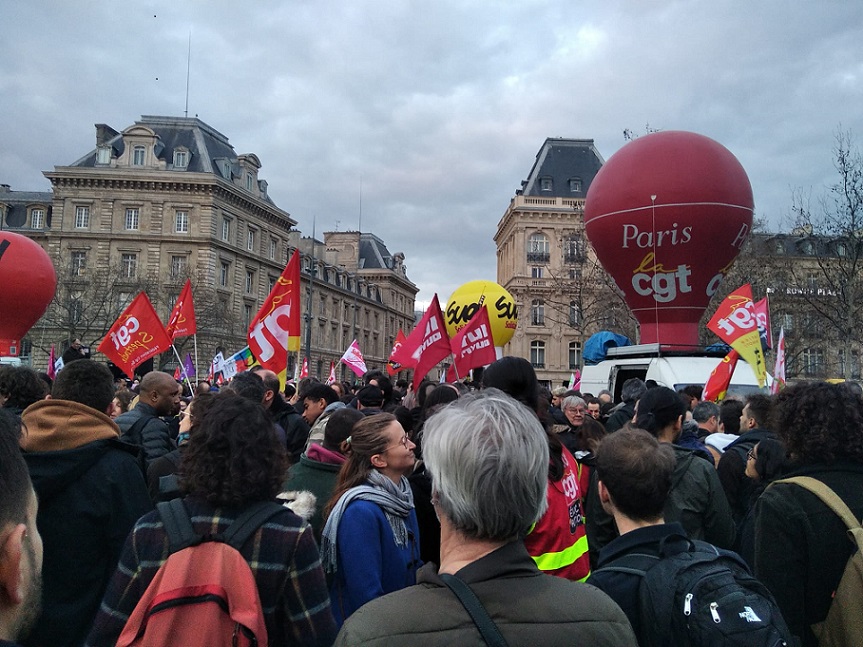
The government is threatening to approve a new law that would ban taking and disseminating images of the repressive acts. Substantial fines are also being announced for attending protests that have not been authorised by the prefecture.
The ‘Macronian’ authoritarian circle is tightening. The traditional violence of a strong state, like the one inherited from the emperor Napoleon or the one that in 1871 wiped the Paris commune – the first socialist uprising in history – off the map, raises its head every time the popular classes dare to take a leap forward.
From union resurgence to the discrediting of Macron
An academic specialising in the history of French pensions states that the adoption of workers’ self-management methods inherited from anarcho-syndicalism has allowed the formula of the ‘open-ended strike’ to thrive.
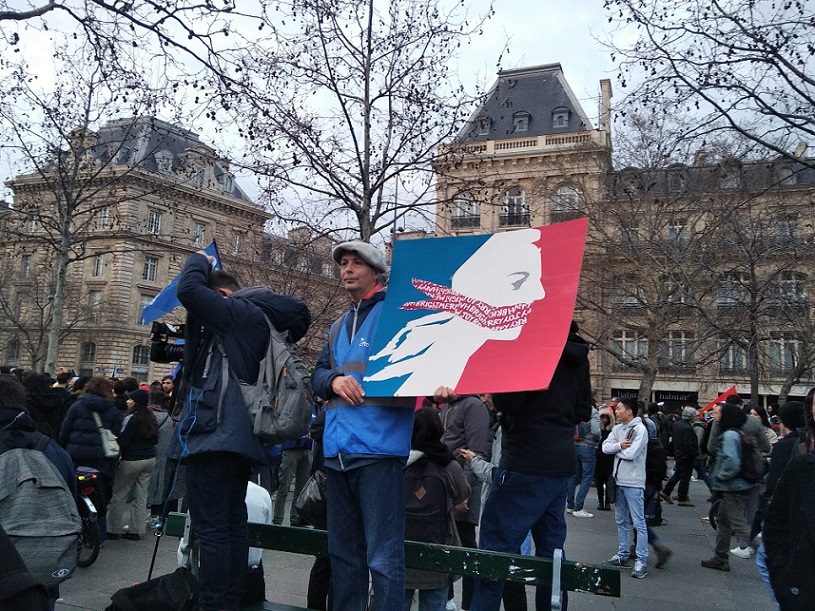
This returns the power of decision on the continuity or not of pressure measures to workers’ assemblies in each company or sector. Other traditions such as ‘strike funds’, to cover the strikers’ essential expenses, are being revived. ‘Imagination to power’ is no longer a slogan in the working classes’ praxis.
The unexpected joining together of all the French unions around an unwaverable demand, the withdrawal of the Pension Reform Law, and the maintenance of this demand at all the public demonstrations, has allowed unionism to recover its former prestige and incorporate a multitude of new precarious sectors, the new economy and public services.
In addition to channelling popular discontent – increased by the rise in prices and the government’s gestures of disdain – this renewed shock force has enabled the far right to be moved away from the multitudinous gatherings.
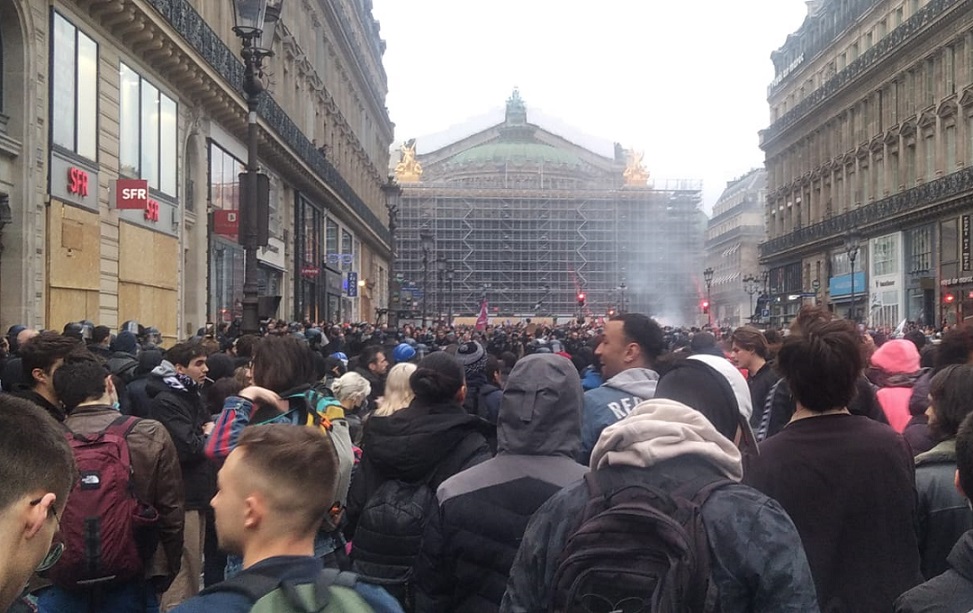
This political group and its leader, Marine Le Pen, expects an electoral profit. The fall in Macron and the classic right’s popularity and a joint rise to 26% of the vote for the leftist coalition of NUPES (New Ecological and Social People’s Union) and the populist Rassemblement National have been the consequences.
Between rage and hope
These last few months, the street has once again been the scene of a cultural rite of initiation for the new generations, the cyclical repetition of which has enabled the country’s most important historical leaps forward, always accompanied by a ‘baptism of fire’ in the waves of violence and repression exercised by the state authorities.
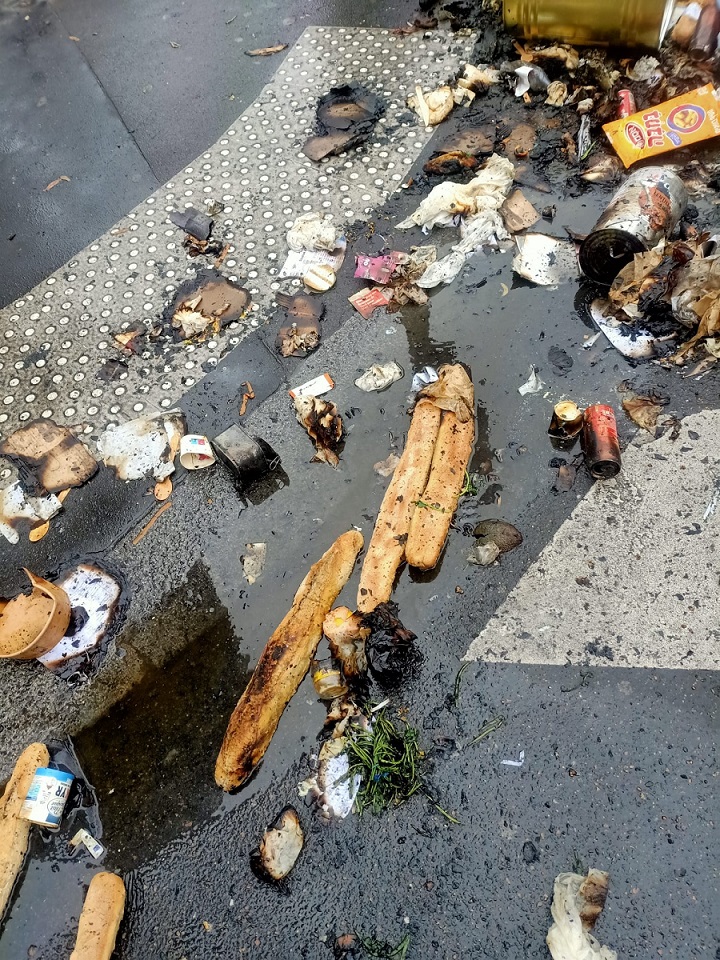
The consequences of the challenge launched by the French people against Macron and the strong economic and financial interests he represents are very diverse and profound.
Among them are the discrediting of the Fifth Republic founded by De Gaulle and of a parliament whose votes no longer represent either the numeric weight or the feeling of the majority of public opinion. Anything is possible, even the rapid fall of the banker president and his refined court.
The revolutionary song the Marseillaise has renewed meaning sung in parliament, at the temporary barricades and in the city squares.
The bloody repression and the new Bastilles where hundreds of demonstrators are terrified without reason are symbols and proof that the ‘class war’, long forgotten, has regained its body and spirit in France.
(Translated by Philip Walker – Email: philipwalkertranslation@gmail.com)












.jpg)












